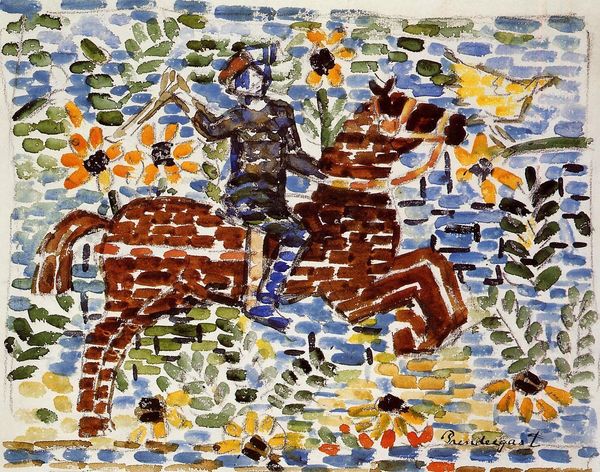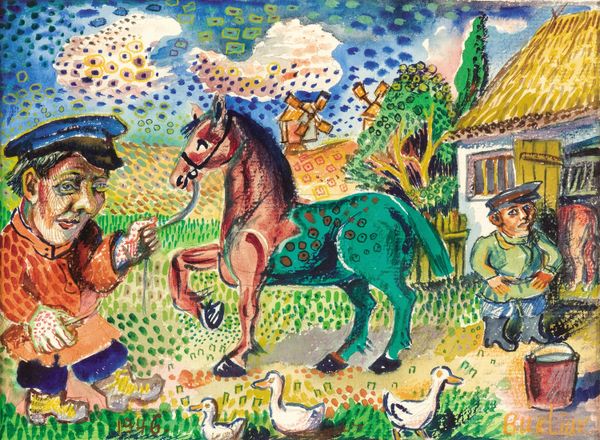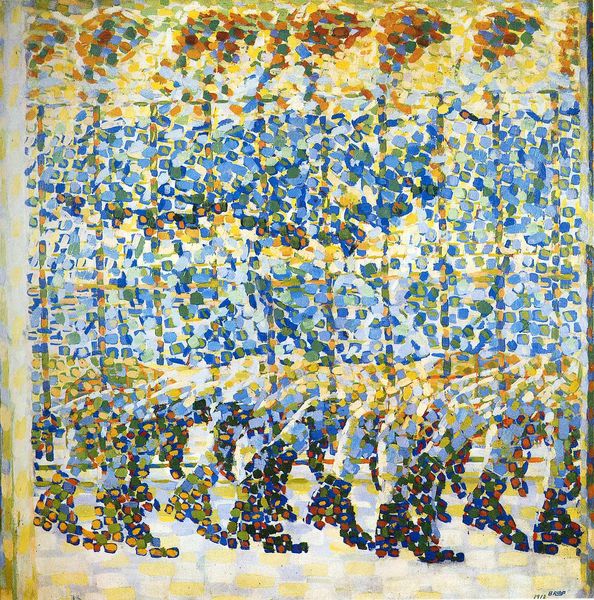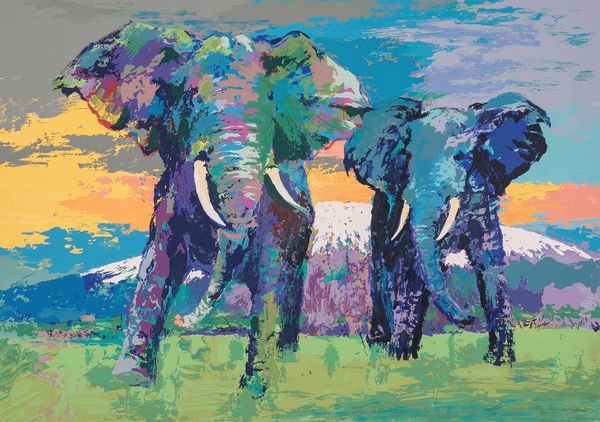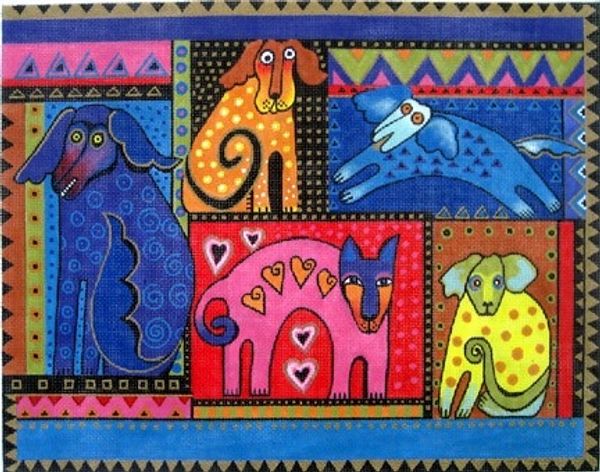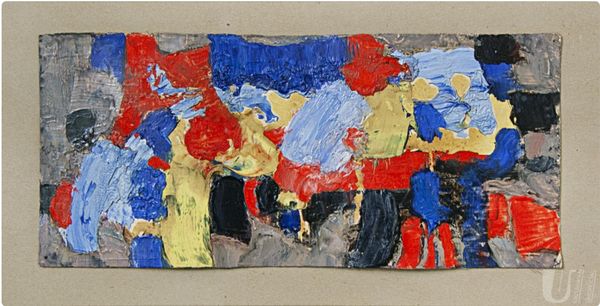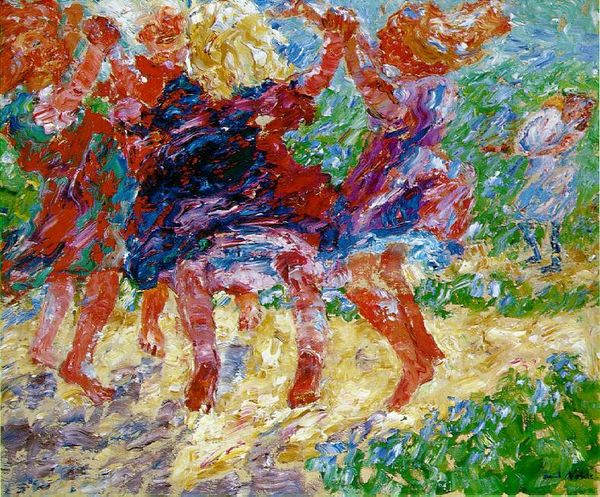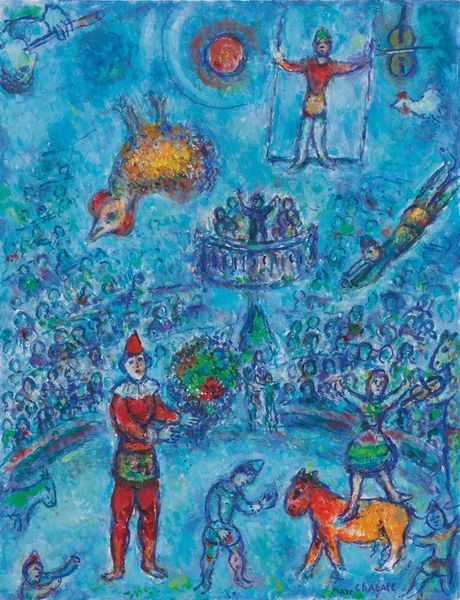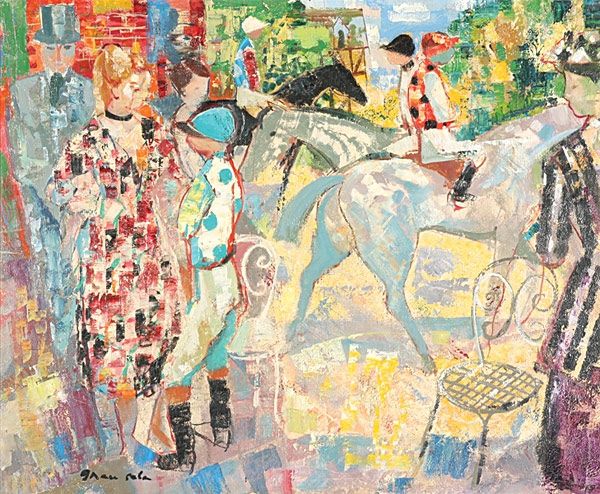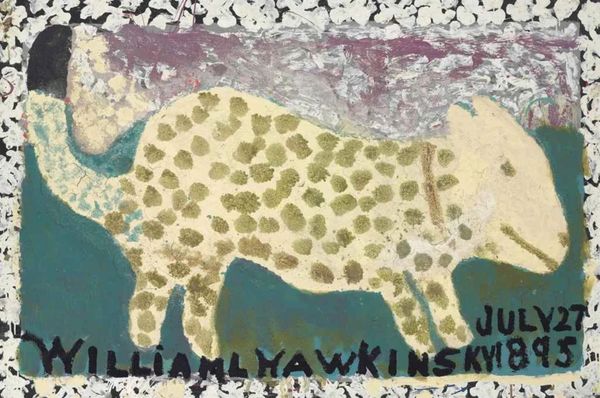
Dimensions: 26.35 x 29.21 cm
Copyright: Public domain
Curator: This is Maurice Prendergast's "Elephant," created around 1915. It’s currently held in a private collection, a work using watercolor with distinct post-impressionist touches. What’s your immediate take? Editor: I’m struck by the materiality; the layered watercolor washes build up these blocky forms, a real tactile quality despite the flatness of the image. The repetitive dabs create a kind of manufactured, brick-like structure throughout, quite unlike what one might expect. Curator: Absolutely. The application lends it a mosaic-like appearance, departing from a purely representational depiction. Considering Prendergast's interest in public life and leisure, it's worth noting that imagery of elephants circulated widely during this period through circuses and zoos, signifying both exoticism and spectacle. How might this context impact its creation? Editor: Given the socio-economic dynamics of spectacle, the creation process intrigues me. It appears so deliberately crafted, those dots, dashes and strokes! Was he mimicking popular print, creating his own form of reproduction using fine art means? It definitely challenges the typical perception of spontaneous watercolor painting. Curator: I see your point. And certainly, the political dimensions can't be overlooked. An elephant represents power and might, especially during the age of colonialism, it held a complex position. It signifies something different when Prendergast, an American artist, takes on the imagery of an elephant within his practice, using methods of impressionism. Editor: This almost pointillist-like use of paint to build form, yet he still keeps the brushstrokes so visibly handmade; how does that play into the dynamic of fine art production in that period, versus something considered mere craft, as in textile or other ‘lesser’ design work? Curator: Good question. Prendergast had previously worked creating posters and commercial art. That tension you note, between ‘high’ art and commercial design, informed his development. That division reflects, more broadly, the developing role of art within early twentieth-century capitalist visual culture. Editor: That's really interesting. It reframes my perspective on what the elephant represents materially – it’s not just about its iconic size or the animal’s exotic appeal; the meaning resides in Prendergast’s construction of the work itself! Curator: Agreed. Seeing the elephant in the wider social and art historical setting gives a richness to what could seem at first look just an ordinary painting. Editor: Precisely, the visible labor and the means by which he applied the watercolor speaks volumes about art and work during his time.
Comments
No comments
Be the first to comment and join the conversation on the ultimate creative platform.
